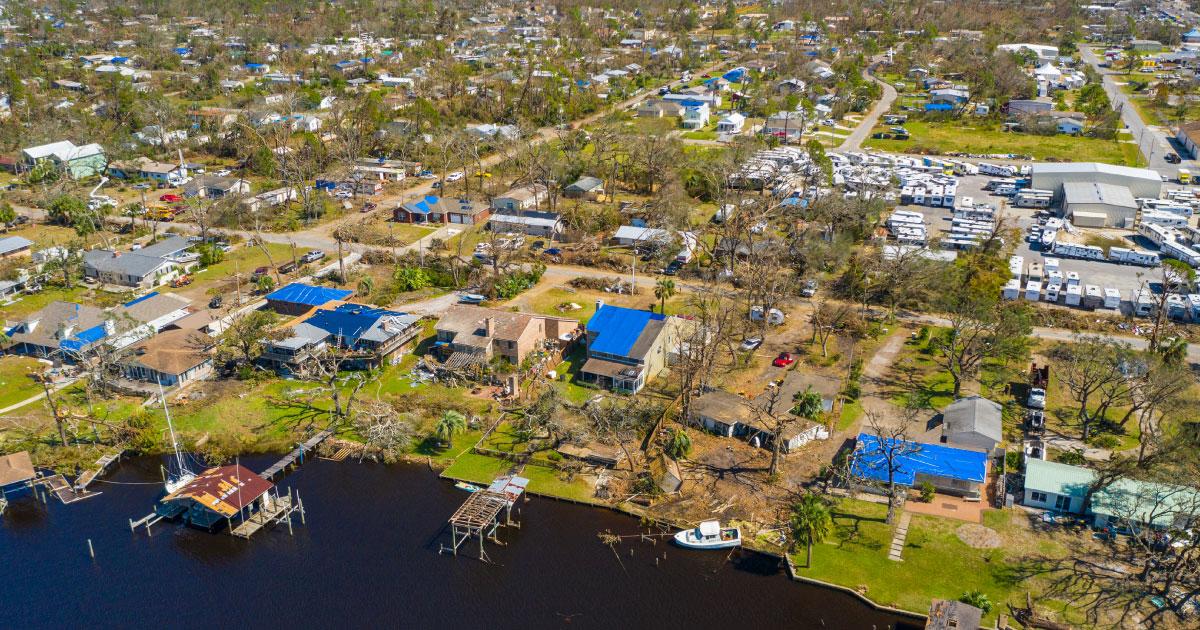Following the impact of Hurricane Michael, the strongest hurricane ever to hit the Florida Panhandle and the strongest U.S hurricane since Andrew in 1992, the MPI North Florida Chapter in coordination with the MPI Tampa Bay Chapter is putting together a two-tier outreach program to help those areas impacted by the gigantic storm.
“We've been reaching out to our members in the area impacted by Hurricane Michael, and have heard from many of them that they are OK,” says Lisa Perry, CMP, president of the North Florida Chapter.
Perry says the exception to the one-on-one communications has been those chapter members to the south and west of Tallahassee in places like Panama City Beach, which still had very spotty communications capacity as late as Friday (Oct.19).
“We have still not heard anything from various members west of Tallahassee in the areas like Panama City because as of now they're still suffering from power outages and are difficult to reach by phone and internet,” Perry says. “But the good news is that the majority of our members in that region of North Florida are concentrated in Tallahassee (the state capital) and as of now the power is up and running and they are starting to recover.”
Perry says she has heard anecdotal accounts of tourism infrastructure damage in Panama City Beach but has not yet heard back from the Panama City Beach Convention & Visitors Bureau, so she does not yet have specifics to share.
As of Monday (Oct. 22), the bureau had the following statement posted on its website:
“Hurricane Michael Update. Visit Panama City Beach is currently assessing the limited impact of Hurricane Michael to most of the destination and plans to re-open the Visitor Information Center later this week. If you have questions, please call our toll-free number, 1-800-PCBEACH. Please continue to visit our website and Facebook page for frequent updates and images.”
Perry says that because of the size of the tourism infrastructure there, Panama City Beach is a significant asset to the northern Florida meetings industry and planners like herself are eager to hear the specific news of what’s happened there. “We expect to know a lot more this week,”she says.
Meanwhile, the North Florida Chapter is putting together a plan that will first focus on helping chapter members immediate needs and then move forward with an initiative to help the general population in the impacted area.
“We will galvanize our chapter, and we have also heard from the Tampa Bay Are Chapter and they are eager to help,” she says. ‘They are ready and on standby to do anything that needs to be done. Assuming that our chapter members are OK we will work with them and take care of their immediate needs first and then we will work together to donate to a reputable organization on a bigger scale.”
Sara Melvin, CMP, president of the Tampa Bay Are Chapter, says she is hopeful about the restoration efforts.
“From what I've heard the relief efforts in the Panhandle are certainly going in the right direction in terms of restoring power and providing food and water and things like that,” she says. “It looks like the vast majority of our MPI chapter members are in an area east of where the main part of the hurricane hit. That doesn't mean they were not affected, but our chapter feels lucky and grateful that so far the members we have been in contact with seem to have fared better than those who live a little further west.”
As of Monday (Oct. 22), the death toll in Florida from the Hurricane stands at 26, with the national death toll at 36 and the number of deaths including those in the Caribbean hitting 50. Property damage estimates range from US$8 billion to $13 billion.
Rick Delahaya, a spokesperson for Gulf Power, the electric power provider in the area hardest hit by Michael, said over the weekend that 89 percent of the electric service in the area had been restored and it appeared the utility would meet its goal of having service restored to 95 percent of its customers restored by Wednesday (Oct 24). He said the work needed to restore the power in the impacted area constituted almost a “complete rebuild” of the electrical grid, with help from power company crews from 16 U.S. states as well as a utility in Canada.







